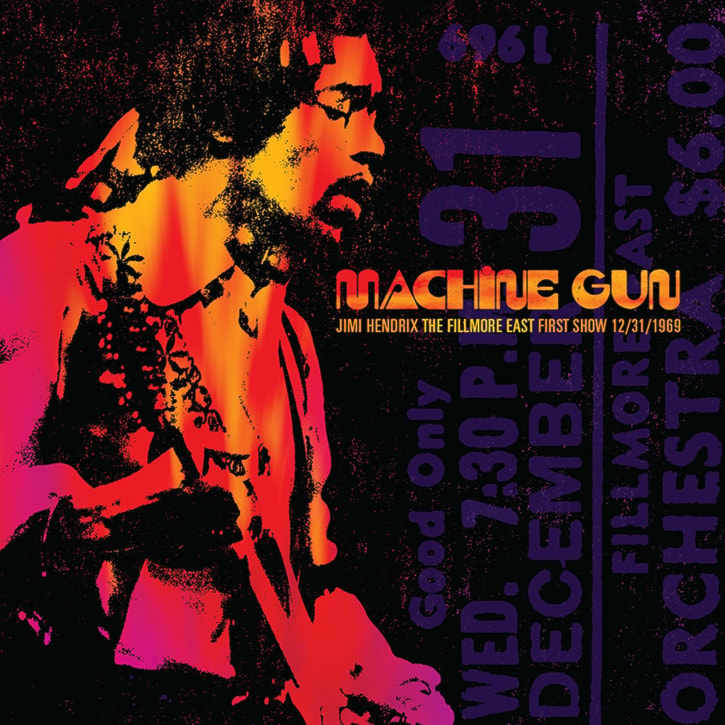At last – a previously unheard recording from Jimi Hendrix that isn’t a piecemeal collection of jams, demos and casual ideas.
Machine Gun: The Fillmore East First Show 12/31/69 is from a famous show in Hendrix’s career, a two-day, four-gig stand in New York City on New Year’s Eve, 1969 and New Year’s Day, 1970.
The recording signals a change for Hendrix, a bold foray into proto-funk and R&B-tinged space- rock with a new group, The Band of Gypsys, with Billy Cox on bass and Buddy Miles on drums and additional vocals.
12,31,69 shows Hendrix as an electric warrior with a hard-grooving band, a cache of topical street songs and loud, intense, anti-war songs. It presents him as the cultural figure that he morphed into, one that used his guitar as a divining rod to tap into and express the unrest and mood of the day.
This recording is from the first show of that run. The dates are auspicious, as is the venue – a counter-culture hub in NYC. The excitement of the set lies in the risk-taking change for Hendrix from psychedelic patron saint of the electric guitar into socially conscious artist with an axe to grind, loudly.
The best thing about this is that it’s previously unreleased as a whole concert set and is preserved as it happened. Also, it’s a clear live recording and the bite and urgency within the performance is laid bare.
Three songs are high points on this album: Isabella, Earth Blues and Machine Gun. Isabella is the demarcation point for Hendrix into riffy, groove-based funk rock that he paired with wartime themes. Earth Blues takes Hendrix’s psychedelic visions and wraps them in a gospel-touched lament on urban unrest and street violence, with a call to calm and understanding.
The album’s centrepiece song, Machine Gun is protest music writ large, a Vietnam War commentary framed in guitar feedback, invoking artillery, bombing and battlefield chaos. The song is a fully realized successor to his Woodstock performance of The Star Spangled Banner and both are wartime music in real time.
Hendrix’s sainthood and deification has inspired misdirected relic hunting in the form of not-meant-to-be-released recordings trotted out to the public. The disappointment factor is there, making future releases a sceptical consideration. This isn’t the case here.
– Dean Gordon-Smith is a Vernon-based musician who reviews the latest music recordings for The Morning Star every Friday.
